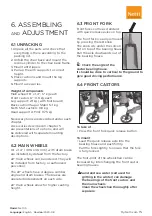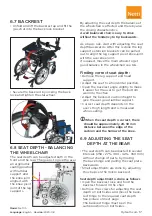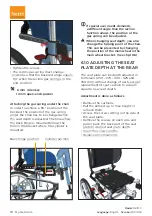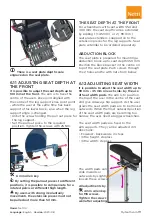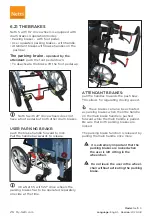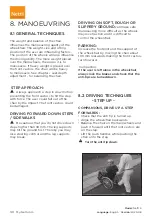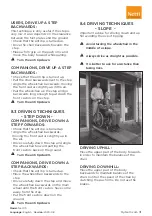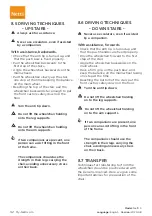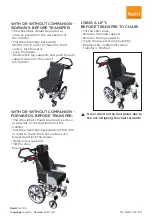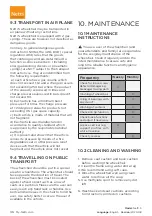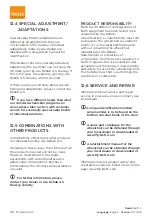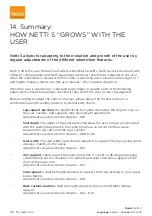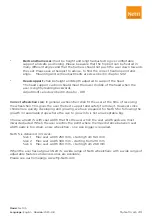
info@solidworks.com
info@solidworks.com
info@solidworks.com
Model:
NettI S
Language:
English
Version:
2020-08
28
My-Netti.com
7 TILT AND RECLINE
GENERAL TECHNIQUES,
KEY WORDS REGARDING TILT
AND RECLINE OF STATIC COMFORT
WHEELCHAIRS,
Tilt and recline are the basic benefits of a com-
fort wheelchair. It allows for varying seating
positions during the time in the wheelchair.
We have reviewed the clinical evidences
regarding tilt and recline, and found there are
several studies or best practice guidelines
suggesting that the tilt and recline sequence is
important to reduce shear and sliding:
First tilt then recline afterwards.
When bring-
ing the client upright again, the sequence
should be recline first then tilt. It would seem
that the most shear would be induced when
going upright from a recline and tilted position.
7.1 TILTING THE SEATING UNIT
OPERATING TILT HANDLE:
Press the left handle on the push bar and put
pressure to the push bar to tilt the seating unit
with one of your hands, while you have eye
contact with the user and put the other hand
on the arm support.
The correct relative angle between the body
parts remain the same when the seating unit
is tilted.
Wherever you let the handle loose, the
seating unit will stay in this position.
To bring the seating unit up, press the
handle and the tilt cylinder will assist you
lifting the seating unit up.
A backward tilted seat unit gives a steeper
seating angle in relation to the surface,
and prevent sliding of the wheelchair user.
The seat unit can be tilted from 0° to +35°.
There is a tilt scale on the chair side.
The tilt sign sits on the
push bar:
The seat and back rest angle must
not be adjusted without using the
anti tips.
To ensure correct function of the
wires, these must never be taut.


